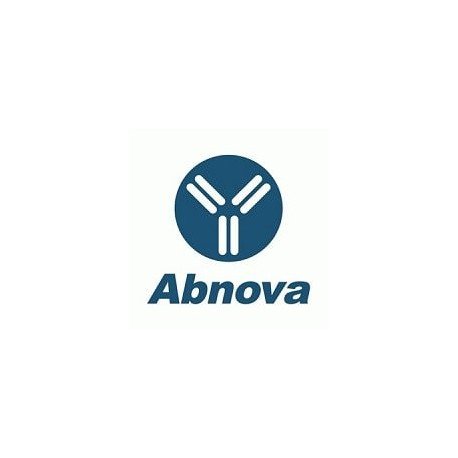Cart 0 Product Products (empty)
No products
To be determined Shipping
0,00 € Total
Prices are tax excluded
Product successfully added to your shopping cart
Quantity
Total
There are 0 items in your cart. There is 1 item in your cart.
Total products (tax excl.)
Total shipping (tax excl.) To be determined
Total (tax excl.)
Data sheet of STAT2 (phospho Y690) polyclonal antibody
| Brand | Abnova |
| Product type | Primary antibodies |
| Reactivity | Human,Mouse,Rat |
| Host species | Rabbit |
| Applications | ELISA,WB-Ce |
More info about STAT2 (phospho Y690) polyclonal antibody
| Brand: | Abnova |
| Reference: | PAB11305 |
| Product name: | STAT2 (phospho Y690) polyclonal antibody |
| Product description: | Rabbit polyclonal antibody raised against synthetic phosphopeptide of STAT2. |
| Gene id: | 6773 |
| Gene name: | STAT2 |
| Gene alias: | ISGF-3|MGC59816|P113|STAT113 |
| Gene description: | signal transducer and activator of transcription 2, 113kDa |
| Immunogen: | Synthetic phosphopeptide corresponding to residues surrounding Y690 of human STAT2. |
| Protein accession: | NP_005410;P52630 |
| Form: | Liquid |
| Recommend dilutions: | ELISA (1:85000) Western Blot (1:500-1:1000) The optimal working dilution should be determined by the end user. |
| Storage buffer: | In 20 mM KH2PO4, 150 mM NaCl, pH 7.2 (0.01% sodium azide) |
| Storage instruction: | Store at 4°C. For long term storage store at -20°C. Aliquot to avoid repeated freezing and thawing. |
| Quality control testing: | Antibody Reactive Against Synthetic Peptide. |
| Note: | This product contains sodium azide: a POISONOUS AND HAZARDOUS SUBSTANCE which should be handled by trained staff only. |
| Product type: | Primary antibodies |
| Host species: | Rabbit |
| Antigen species / target species: | Human |
| Specificity: | This affinity purified antibody is directed against human STAT2 pY690 protein. |
| Reactivity: | Human,Mouse,Rat |
| Application image: |  |
| Application image note: | Western blot using STAT2 (phospho Y690) polyclonal antibody (Cat # PAB11305) shows detection of STAT2 pY690 protein (arrowhead) in Jurkat cells without (left lane) and with (right lane) 1000 U/mL of IFN-alpha for 15 min at 37°C. The primary antibody was used at 1 : 1,000. Personal Communication, A.Gamero, NCI, Bethesda, MD. |
| Applications: | ELISA,WB-Ce |
| Shipping condition: | Dry Ice |
| Publications: | Functional subdomains of STAT2 required for preassociation with the alpha interferon receptor and for signaling.Li X, Leung S, Kerr IM, Stark GR. Mol Cell Biol. 1997 Apr;17(4):2048-56. |


